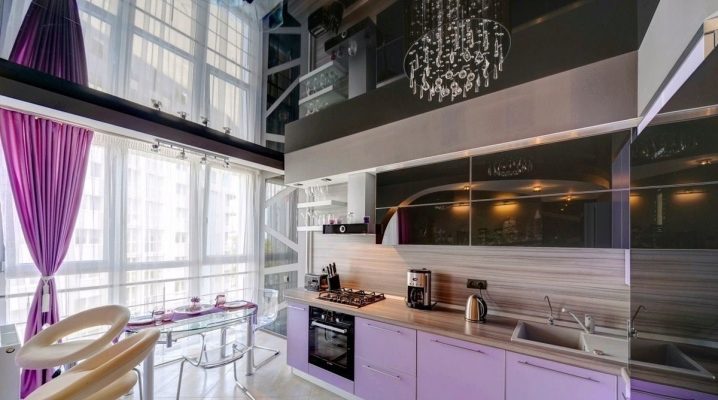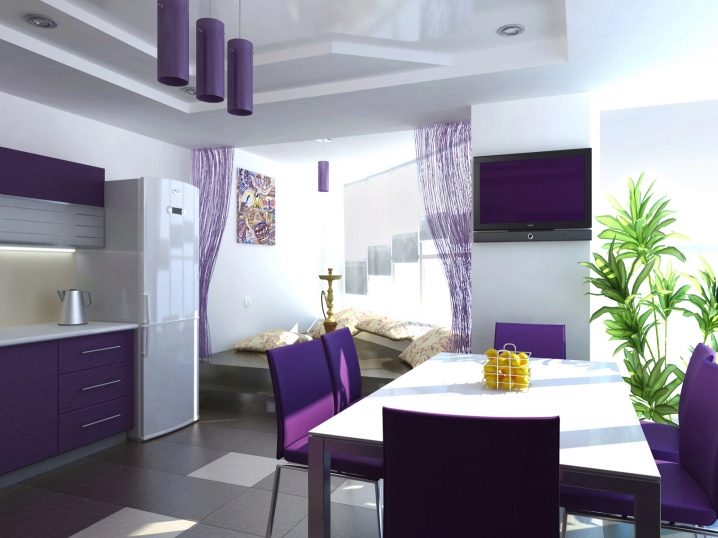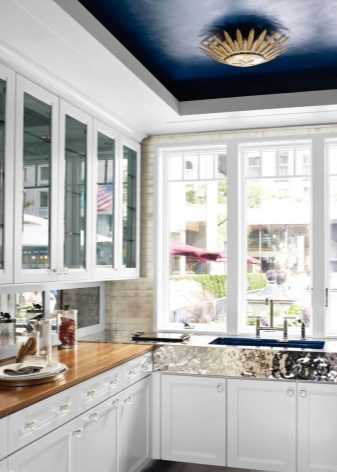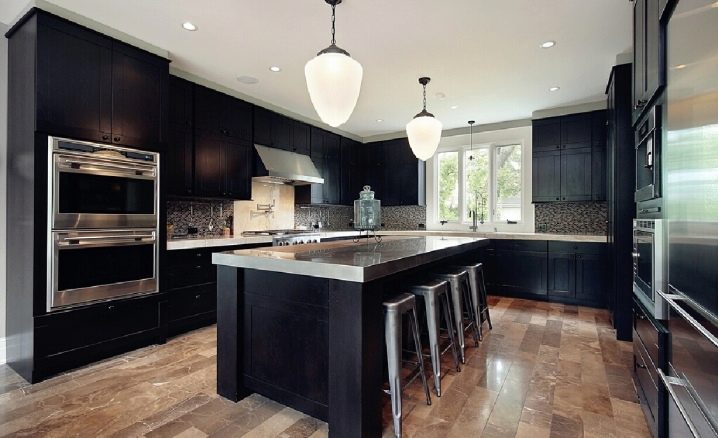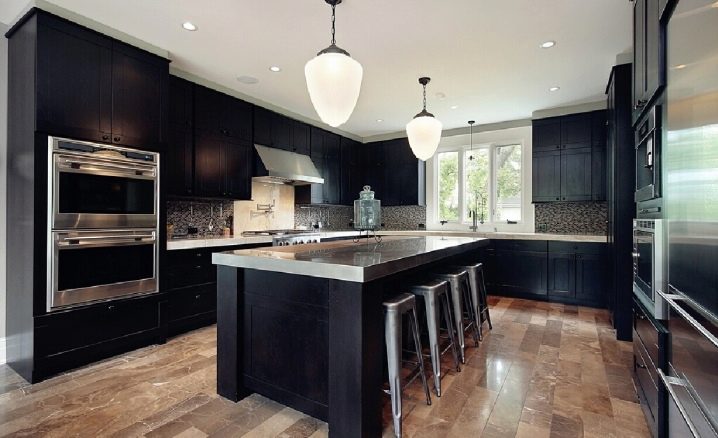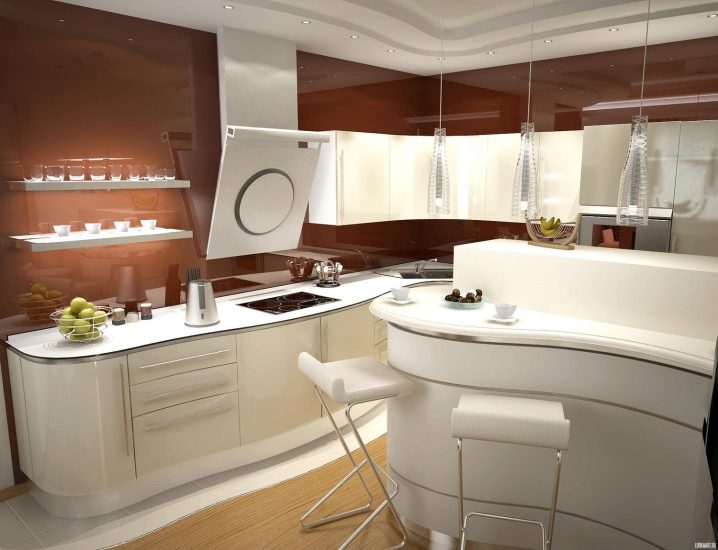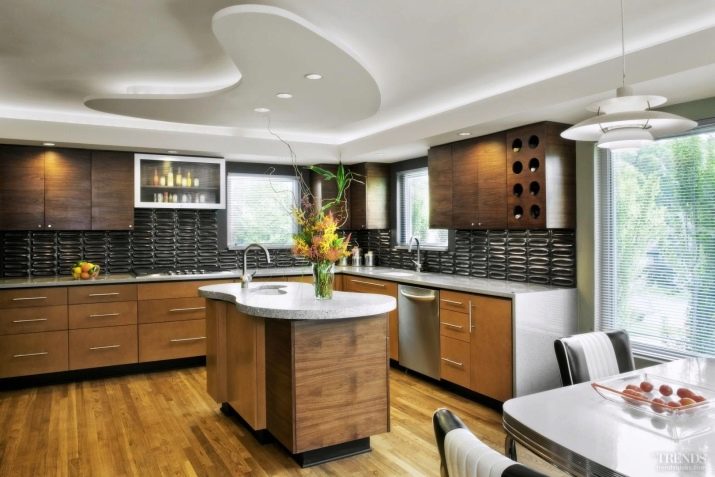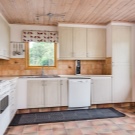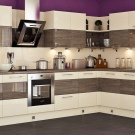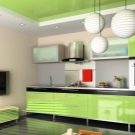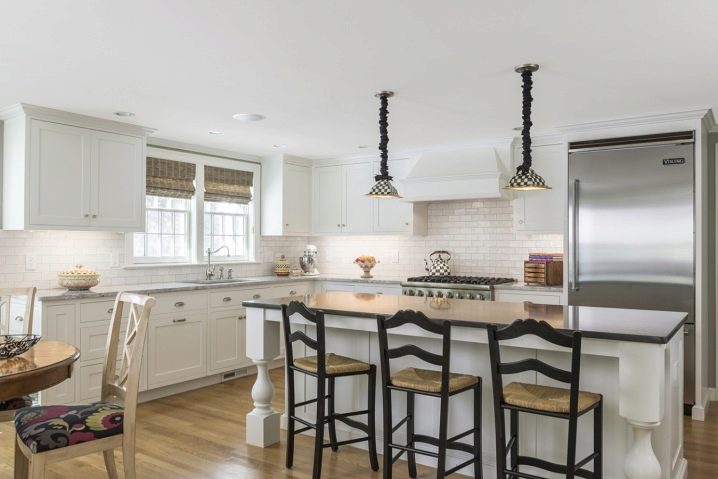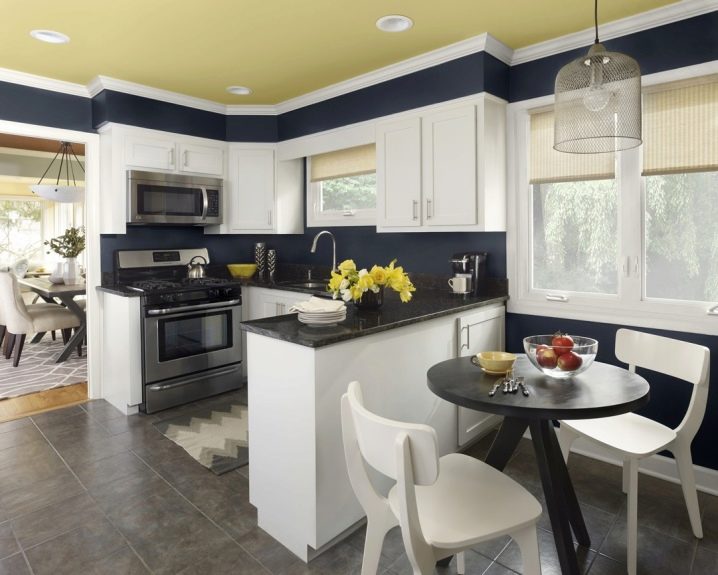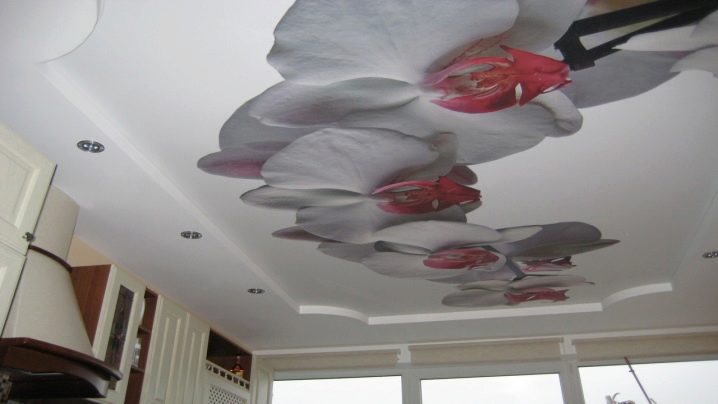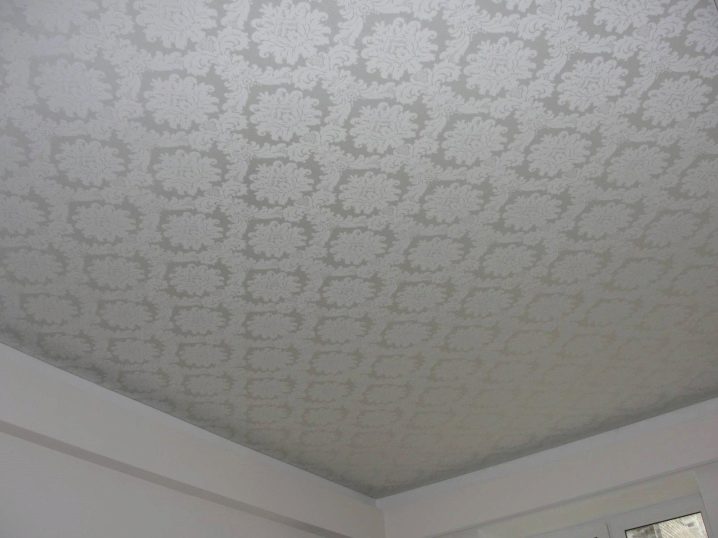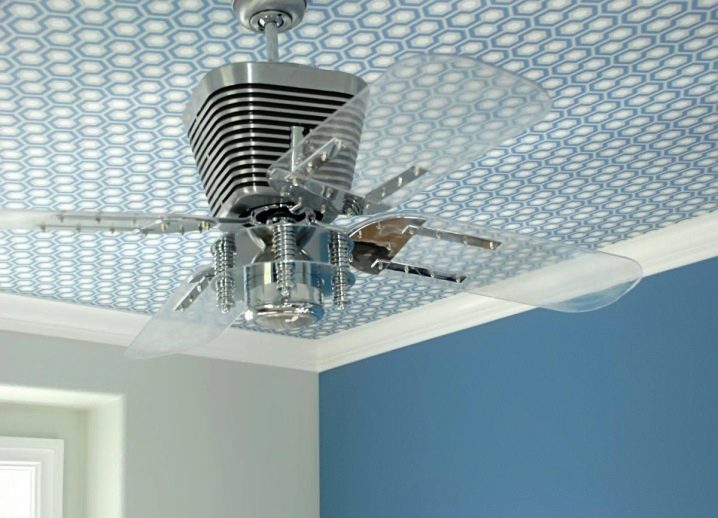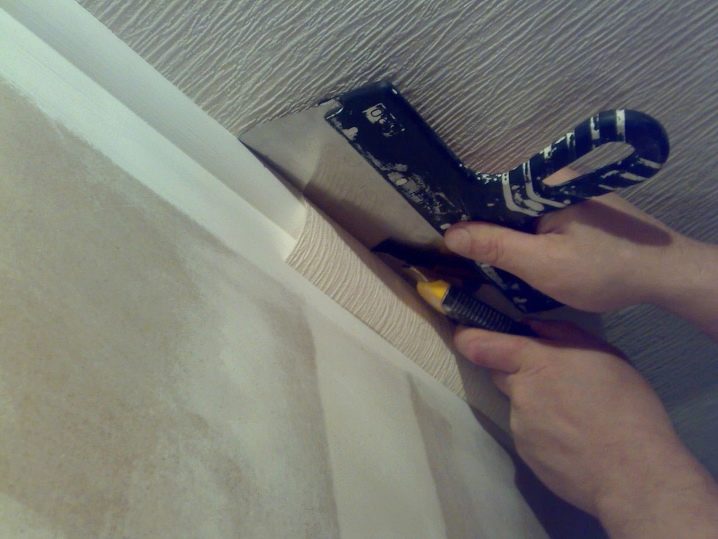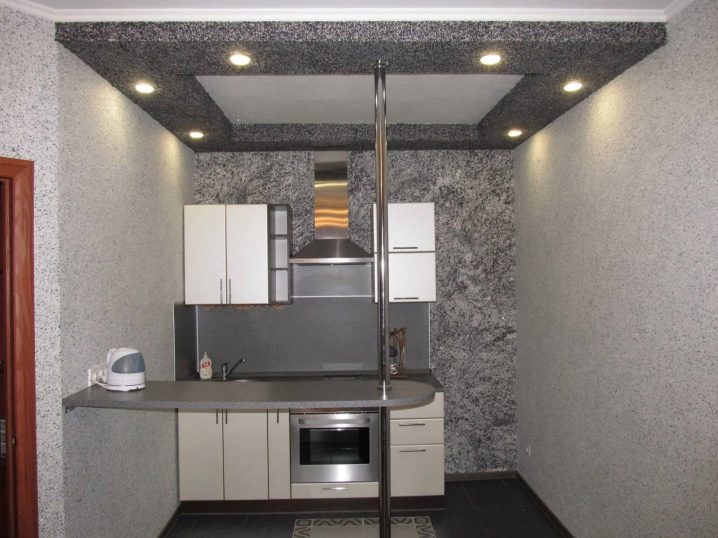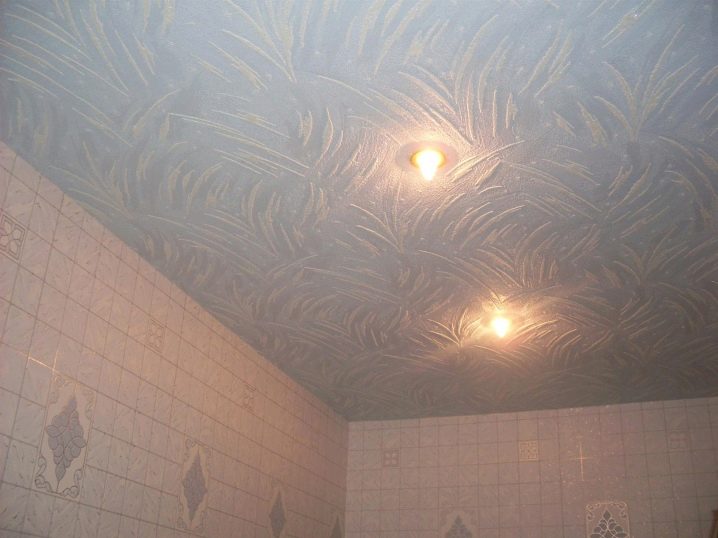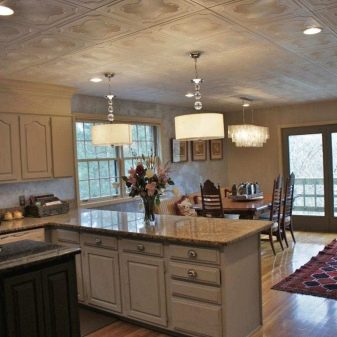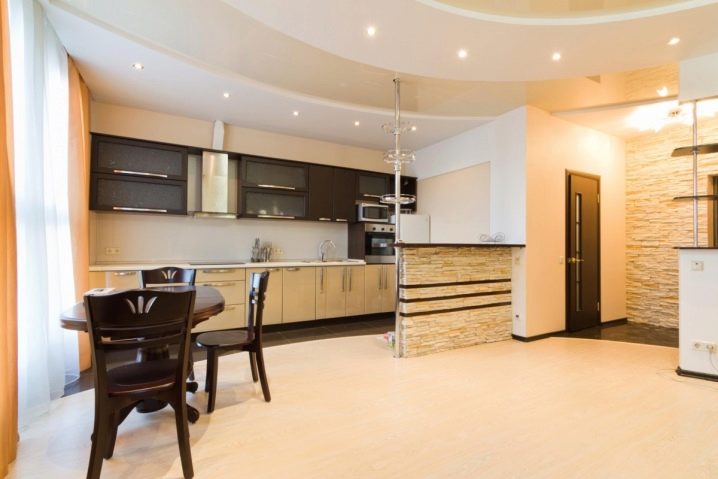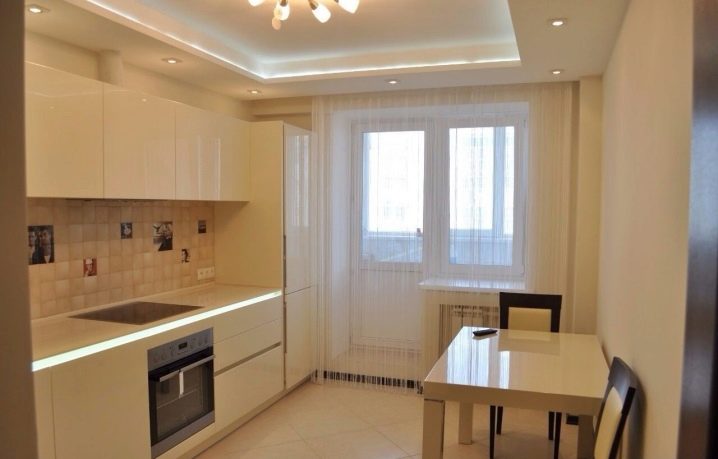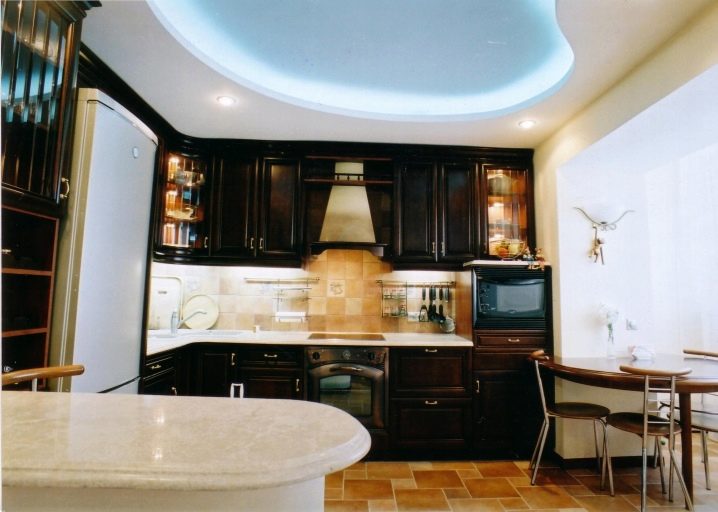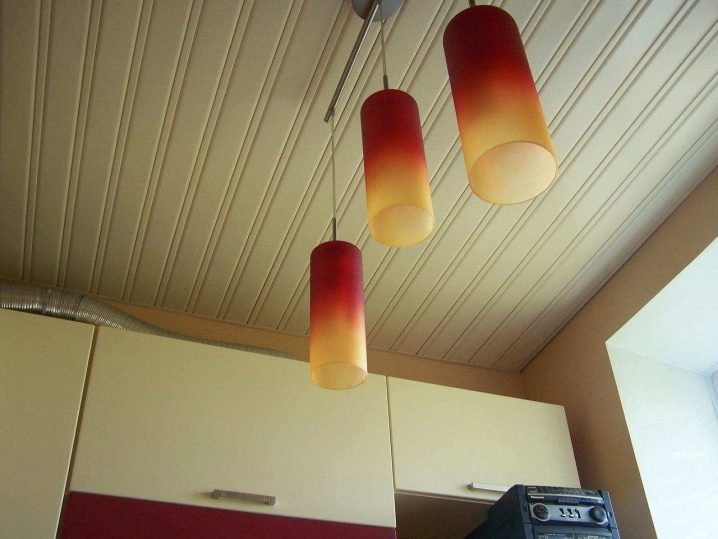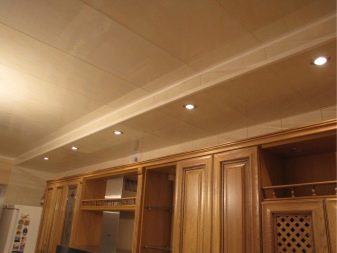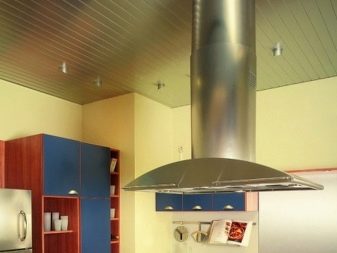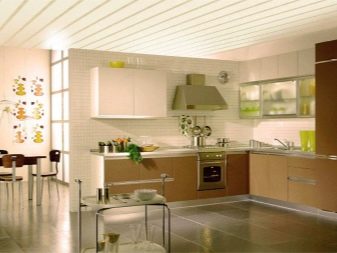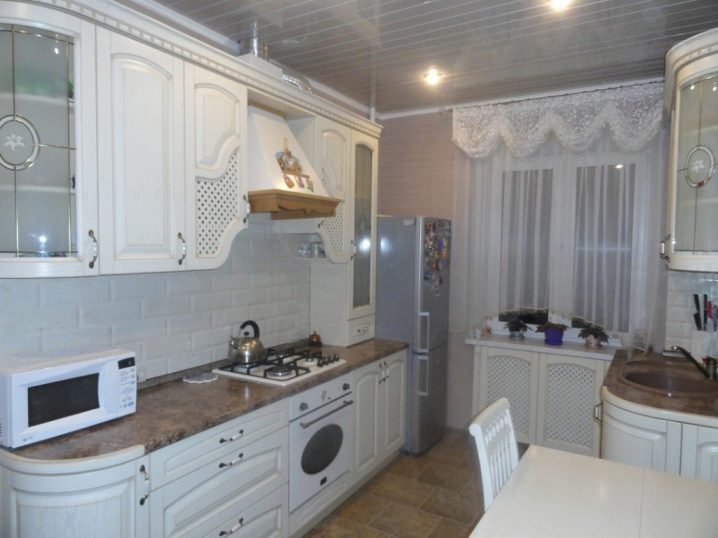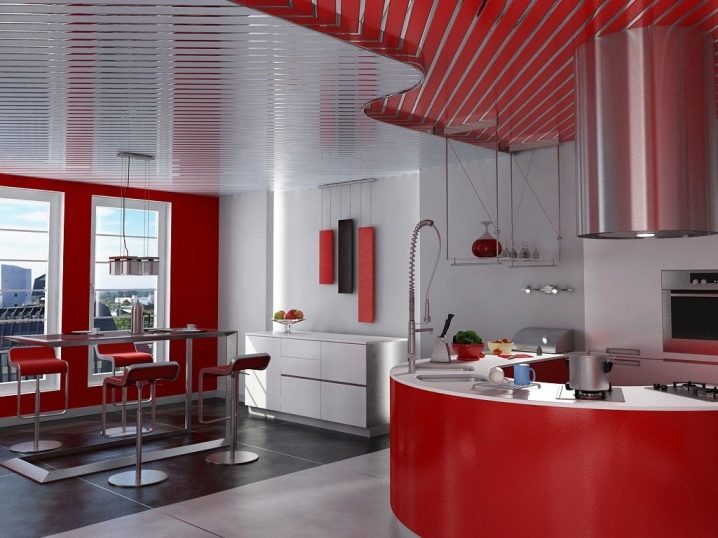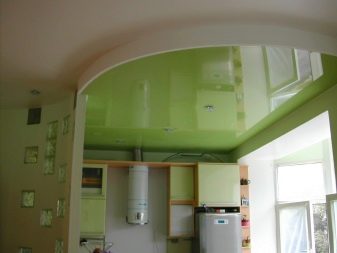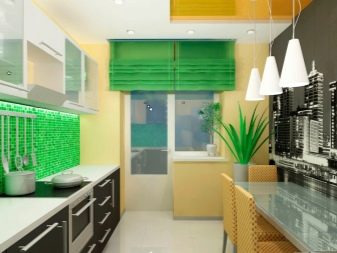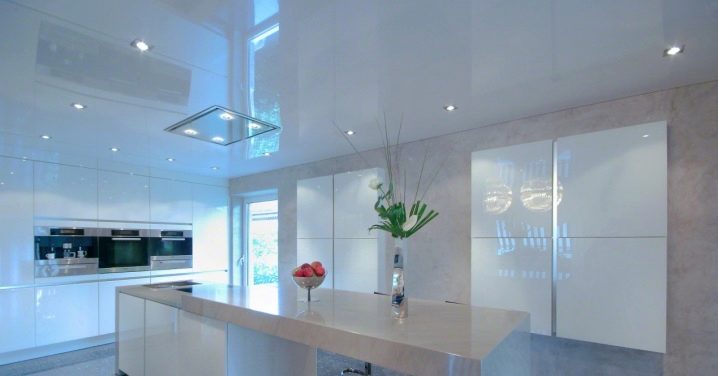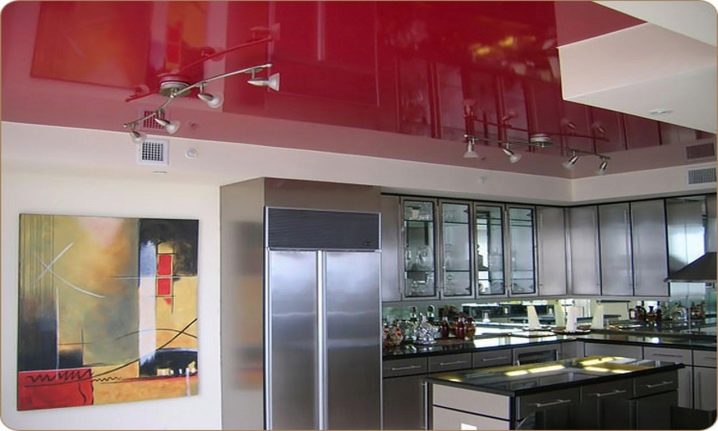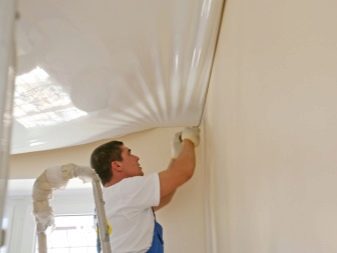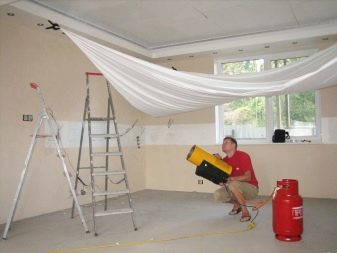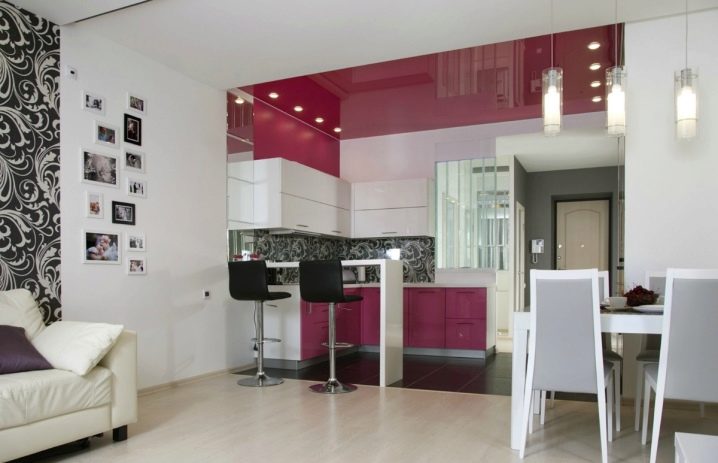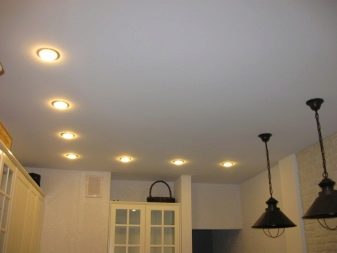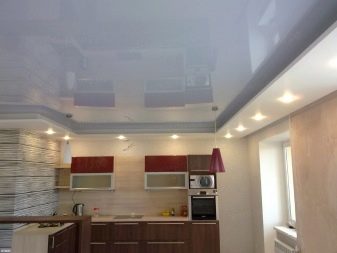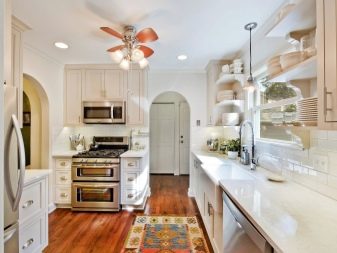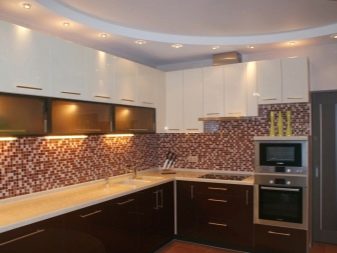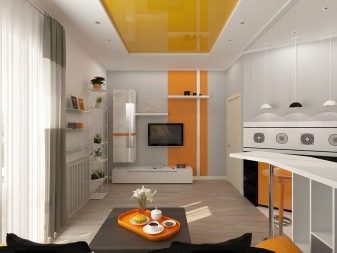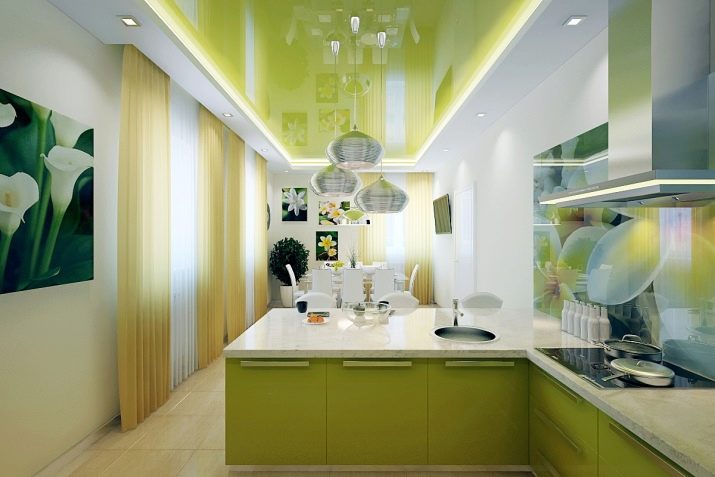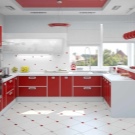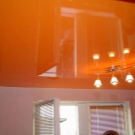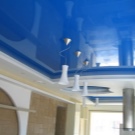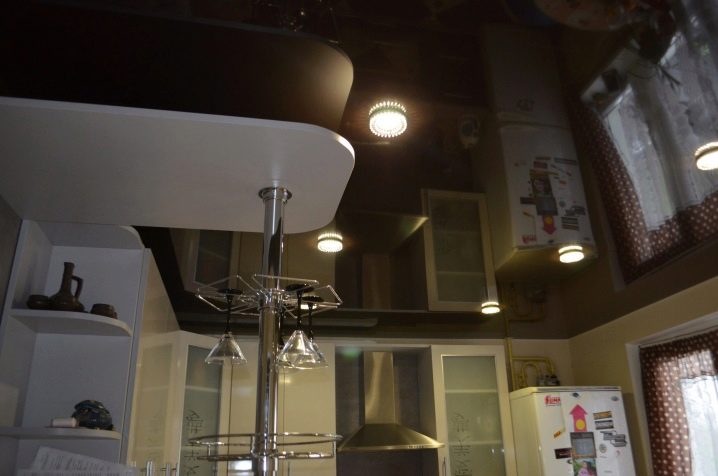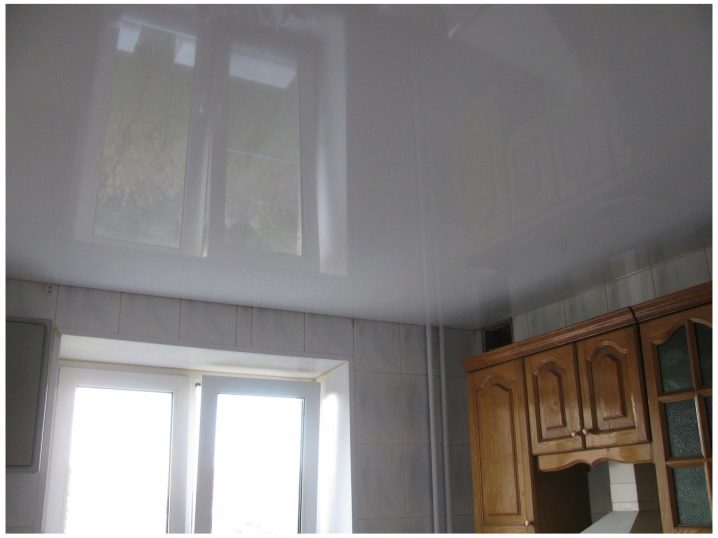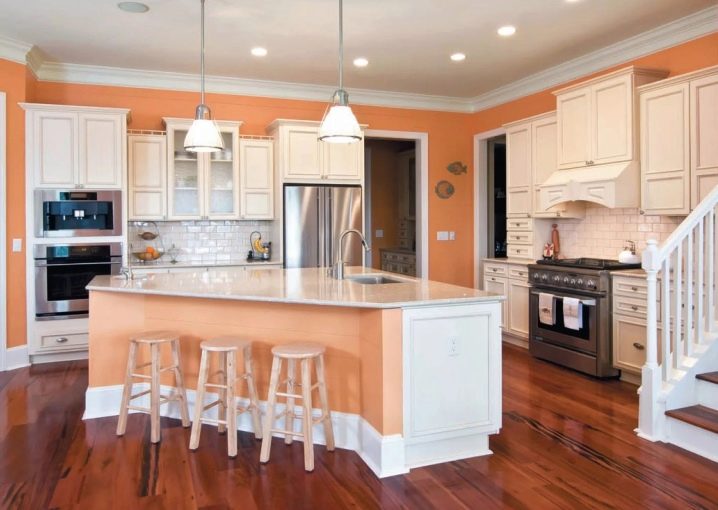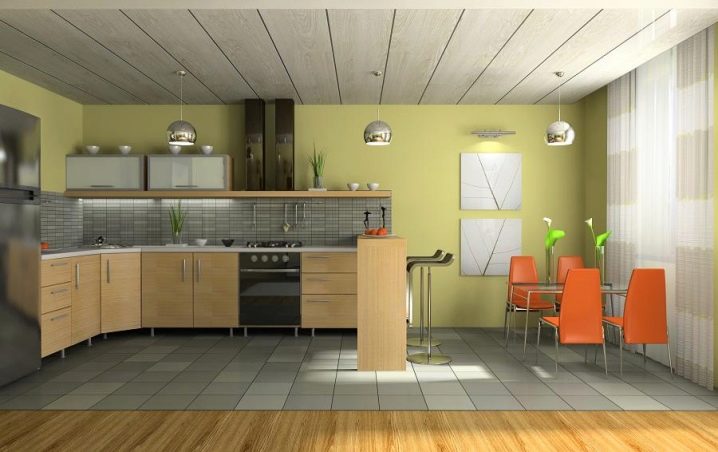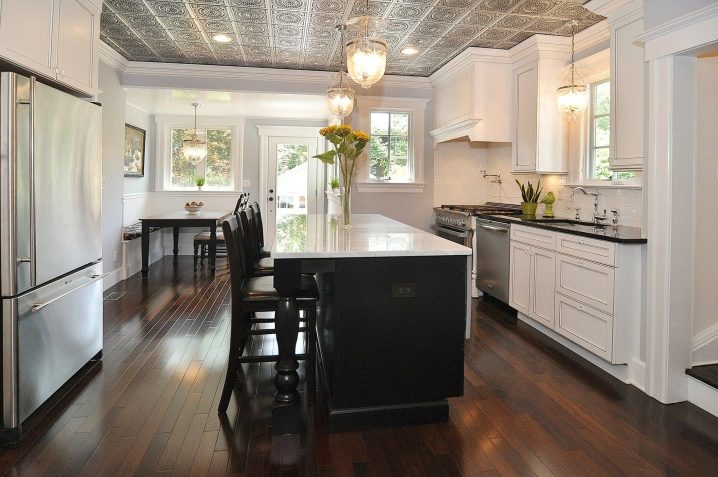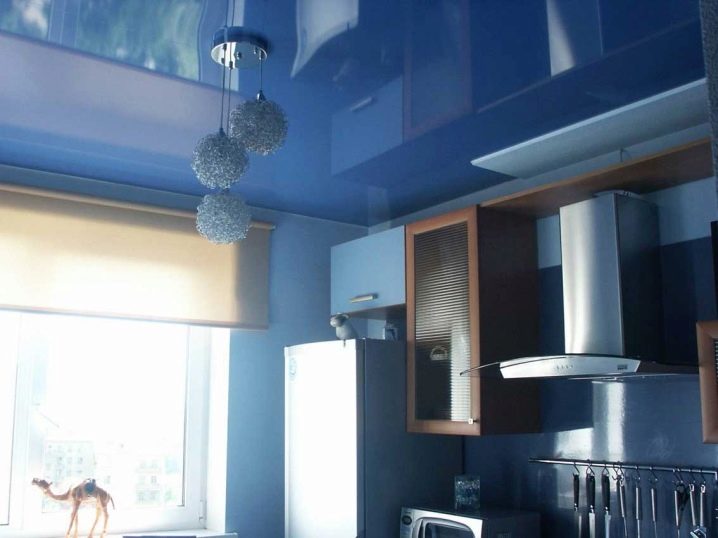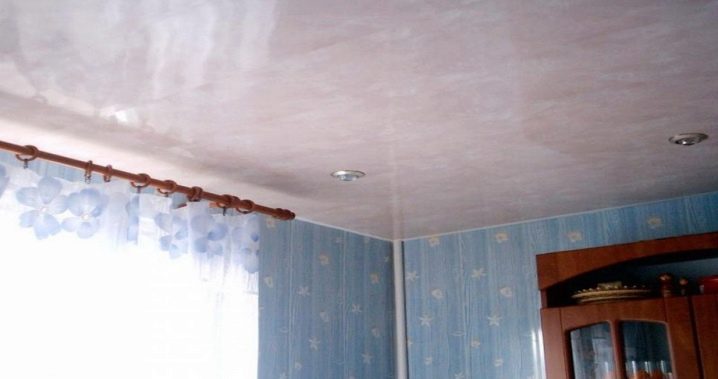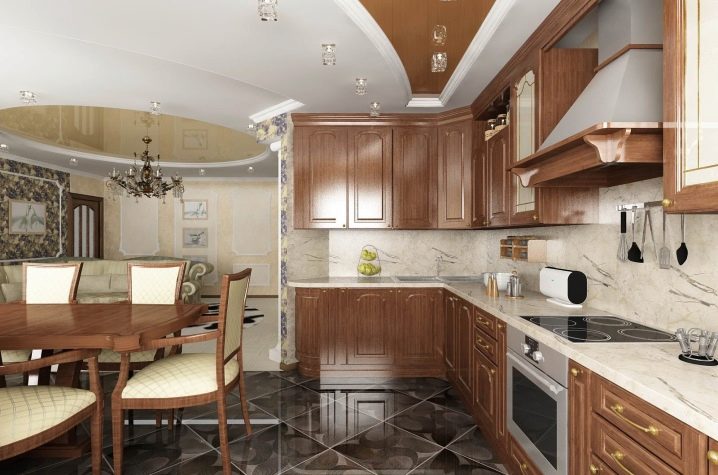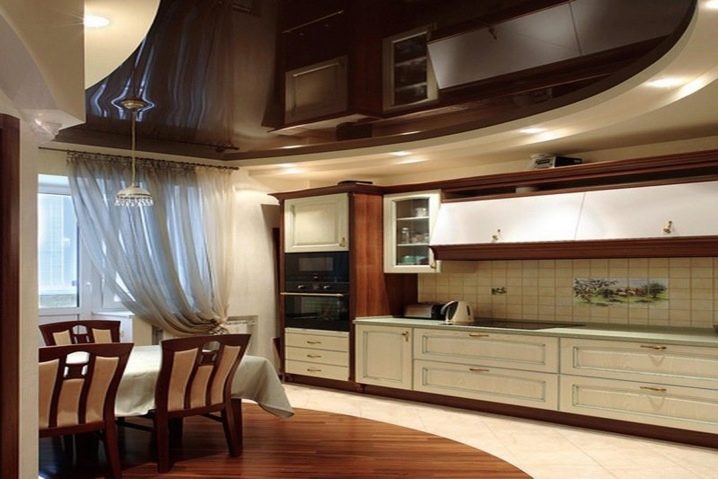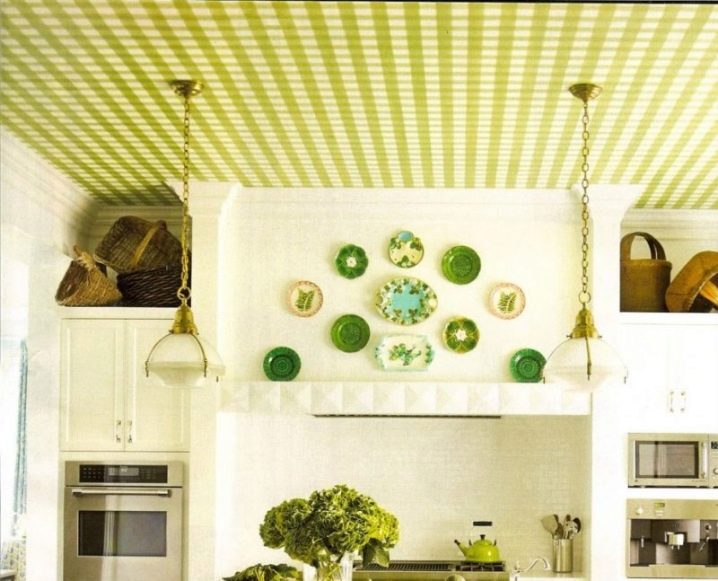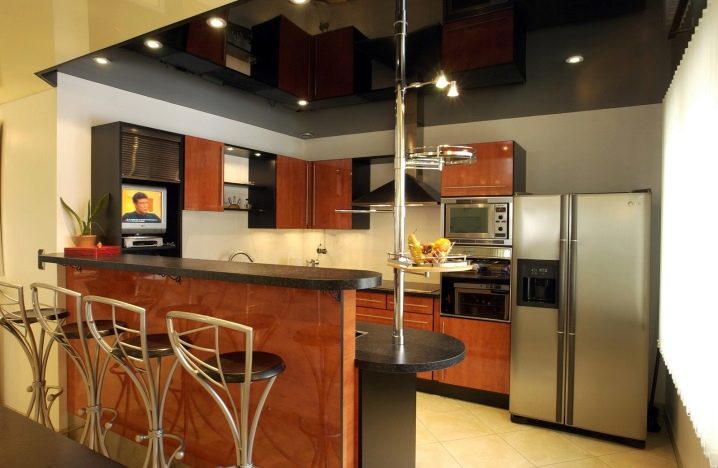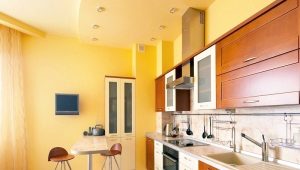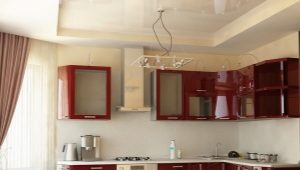Which ceiling is better to do in the kitchen
The kitchen is a place where they not only cook, but also spend most of their time talking with family and friends over a cup of tea. That is why it is so important to create not only a comfortable interior for cooking and eating food, but also a comfortable one in terms of being there. In addition, we should not forget that, nevertheless, in this room there is an aggressive environment, which consists in various kinds of fumes, and as a result - the increased humidity of the room. And for the choice of finishing materials, especially those used on the ceiling, the relevant requirements must be put forward.
Material Requirements
Materials for finishing the ceiling great variety. But not all of them are suitable for use in the kitchen. High humidity, high temperatures, soot in the kitchen with a gas stove - all this adversely affects the ceiling, as a result of spoiling the whole look of the kitchen. To avoid this, when choosing, you need to consider the following:
- We choose waterproof materials on the kitchen ceiling, with the ability to wash them, because according to the laws of physics with warm air from the stove all the pollution immediately rise to the ceiling;
- Due to the fact that they will often have to be washed, it is better to make a choice in the direction of moisture-resistant and wear-resistant materials;
- As in any other room, the ceiling in the kitchen should hide all irregularities, if any;
- The ceiling should look aesthetically pleasing, fitting into the overall style of the kitchen.
Finding a ceiling covering that will meet all requirements is difficult, but you still need to somehow get closer to the ideal.
Types of finishes
In Soviet times, in the "Khrushchev" the most popular ceiling trim in the kitchen was its enamel paint. This emphasized all the irregularities of the ceiling, thereby giving a terrible look to the whole kitchen. Then the ceilings began to level, the enamel was replaced with water-based paint in different colors, and the look of the kitchen changed for the better.
But time is passing, fashion is changing, new technologies are being introduced, and in modern realities such a coating fades into the background, allowing more modern materials with better parameters to be applied in the kitchen interior.
What coverage should be in your kitchen, will tell not only the interior, but also the wallet, because the budget for the use of a particular material for finishing the kitchen is different at times.
Whitewashing or painting
Whitewashing ceiling tiles, whether in the kitchen or in any other room, is no longer relevant. Instead of lime and chalk came new, more technological materials. This is due to the fact that, firstly, the whitewashing did not tolerate the aggressive environment of the kitchen, secondly, it was impossible to wash it, and the yellowed coating had to be re-painted, thirdly, the whitewashing quickly began to crack and crumble. But there were some advantages to using whitewash. She well hid the irregularities of the ceiling, it was easy to do the work themselves, the budget option.
Replaced whitewash came painting water-based paint. This made the ceiling coating more resistant to moisture and temperature changes. Now you can wash it. At the same time, paint the ceiling tiles with paint, it is not more difficult than to whiten. But the cons are also preserved. Coating paint also begins to crack after a short time. Over time, the white color is lost.With strong humidity or in the event of flooding, the paint peels off the ceiling. Partially repair such a ceiling will not work. When cracking or peeling will have to repaint completely.
Wallpaper
The ceiling in the kitchen can also be covered with wallpaper. But it is a short-lived coating, even with the use of washable.
The disadvantages of pasting kitchen ceiling wallpaper are as follows:
- due to high humidity at the joints, the wallpaper can be deformed and spread;
- very time-consuming process - pasting wallpaper on the ceiling;
- if neighbors flood you, you will have to completely change the ceiling.
The advantages are that:
- there is an opportunity to wash them if they have the corresponding invoice;
- Enough budget option;
- no leveling required;
- You can finish yourself.
If you still decide to glue the ceiling in the kitchen with wallpaper, it is better to choose them from vinyl. These wallpapers perfectly hide all the bumps, while they are easy to wash with soap and water.
Now gaining popularity kitchen ceiling liquid wallpaper. They are more durable than usual, they can be repaired if necessary.
A large selection of colors will help to choose this type of wallpaper for any interior, and the plaque and yellowing will be almost invisible.
Ceiling tiles
As a budget option is very popular. It does not require prior preparation, the tiles are simply glued to the ceiling. This is a durable coating, and if you choose a beige shade of tiles on them you will not see a yellow patina.
Drywall
Suspended ceiling from moisture resistant drywall will look great. It will help not only to level the ceiling, but also to delimit the space between the kitchen area and the dining room. With this ceiling, you can implement almost any design project, play with lighting and decor.
Advantages:
- this coating is durable;
- under it you can hide not only irregularities, but also engineering communications;
- Finishing can be done with different materials depending on the intended interior design.
The disadvantages include the fact that when you install this ceiling, the height of the kitchen is reduced by an average of 10-20 cm. Also, the finish will need to be updated periodically. Besides,from constant humidity at the joints of sheets of drywall may form a gap. To avoid this, you need to use the system of the mobile ceiling CD, but it is not very cheap. And under the condition of flooding, even moisture-resistant drywall will deteriorate, and the entire ceiling will have to be redone completely.
It is necessary to order a hinged ceiling only from experts, as at its installation certain calculations are required. If they are done incorrectly, the entire structure of plasterboard may collapse.
Plastic
The ceiling of plastic panels is very popular due to its practicality and durability. He is not afraid even flooding. If one of the panels becomes unusable, it is easy to replace. Plastic panels do not require additional finishing. For the implementation of the finish you will need guides, the panels themselves and sealant, which will gloss over the joints. This is a relatively inexpensive material for finishing the kitchen ceiling.
But not everything is so cloudless in the application of plastic panels. Cheap models can emit harmful substances, especially with little heat. In addition, under the action of sunlight rays from PVC tend to yellow.The surface of the panels must be washed frequently, since if the fat dries out, it will be difficult to wash it off, especially since abrasives may scratch the surface.
Rack systems
The use of slatted lamellae is another option for finishing the ceiling in the kitchen. Depending on the design chosen, this material can be applied in white, beige or metallic colors. Rack ceiling can be plastic or aluminum, the latter option is preferable for the kitchen, but it is more expensive.
Usually, in the kitchen using this system arrangement with closed seams. This is due to the fact that in the open seams will accumulate fat and fumes, and wash them out is very problematic.
You can assemble this type of ceiling yourself. It is made in the form of a designer.
Stretch ceiling
Stretch ceilings are gaining increasing popularity day by day, and in the kitchen, including. But the installation of this design can only produce a specialist with the use of certain equipment.
As a result of the installation of the stretch ceiling, we obtain a coating that meets the following requirements:
- Durability. This ceiling will last more than one year;
- Resistant to moisture.The fumes in the kitchen he is not afraid;
- Ideally flat surface, it will hide all the defects of the ceiling;
- It is possible to combine with other types of finishes. Attractive in terms of design;
- Easily tolerate even large flooding. To fix it, you just need to call the master to drain the water from the ceiling.
But there are also disadvantages here:
- High price;
- Call the wizard for installation;
- Reduces the height of the room.
When installing stretch ceilings, you should contact only well-known specialists who have a positive experience in performing this type of work, since the installation is performed using gas cylinders and there are frequent cases of explosions.
If you decide to install stretch ceilings in your kitchen, you will be offered many options of various colors and textures.
But the main question is what surface to choose for the kitchen, glossy or matte.
It depends on your preference. The matte ceiling will resemble water-based paint. Such a ceiling is suitable for any interior, it will not distract attention from the main accents. There is no dust on the frosted ceiling.
The glossy ceiling in the kitchen space is now at the height of fashion. It can act as the main accent in the interior, but it is unlikely to fit it into all design options.
Selection features
Choose the ceiling in the kitchen should, well weighing all the pros and cons. According to reviews, the majority vote for the application of a tension coating. This is due to the fact that, unlike the others, it is much more practical, it is possible to choose any kitchen. But you can use other options. It depends only on your personal preference.
Colour
You can also experiment with color in the kitchen.
Classic white is suitable for all interior options. But a bright accent on this space can also be arranged on the ceiling. Brave hi-tech lovers can even trim the ceiling in black. True, this is only suitable for large kitchens in private homes.
For the ceilings in a small apartment white glossy finish is perfect. This will help visually stretch the room.
Examples of competent choice
Painted ceiling in the interior of the kitchen of modern style.
Reiki lamellae in hi-tech interior.
Classic style tiled ceiling
Glossy suspended ceiling in a small kitchen.
The ceiling of the PVC panels in a small kitchen.
Combination of various ceiling coverings.
Separation of areas in the kitchen using the ceiling.
Wallpaper ceilings in the kitchen in a rustic style.
Black high-tech ceiling.
